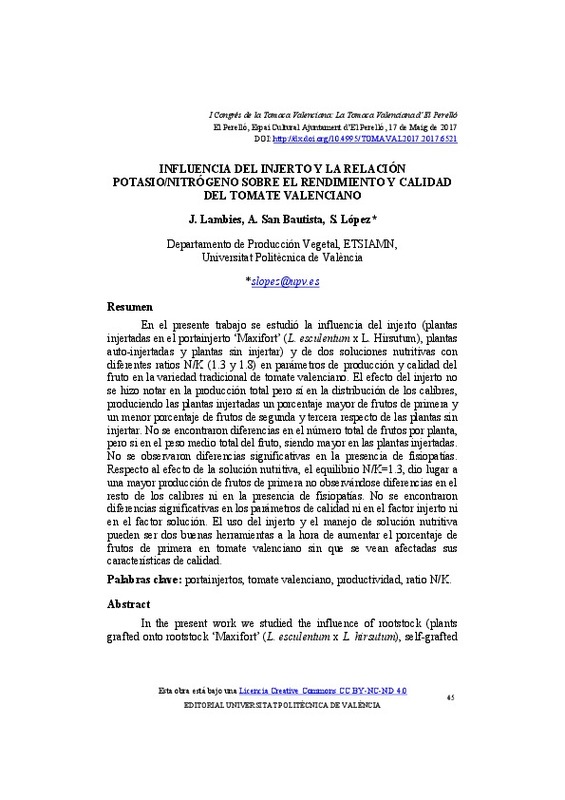JavaScript is disabled for your browser. Some features of this site may not work without it.
Buscar en RiuNet
Listar
Mi cuenta
Estadísticas
Ayuda RiuNet
Admin. UPV
Influencia del injerto y la relación potasio/nitrógeno sobre el rendimiento y calidad del tomate valenciano
Mostrar el registro completo del ítem
Lambies, J.; San Bautista Primo, A.; López Galarza, SV. (2020). Influencia del injerto y la relación potasio/nitrógeno sobre el rendimiento y calidad del tomate valenciano. En I Congrés de la Tomaca Valenciana: La Tomaca Valenciana d'El Perelló. Editorial Universitat Politècnica de València. 45-61. https://doi.org/10.4995/TOMAVAL2017.2017.6521
Por favor, use este identificador para citar o enlazar este ítem: http://hdl.handle.net/10251/159269
Ficheros en el ítem
Metadatos del ítem
| Título: | Influencia del injerto y la relación potasio/nitrógeno sobre el rendimiento y calidad del tomate valenciano | |
| Autor: | Lambies, J. | |
| Entidad UPV: |
|
|
| Fecha difusión: |
|
|
| Resumen: |
[ES] En el presente trabajo se estudió la influencia del injerto (plantas injertadas en el portainjerto ‘Maxifort’ (L. esculentum x L. Hirsutum), plantas auto-injertadas y plantas sin injertar) y de dos soluciones nutritivas ...[+]
[EN] In the present work we studied the influence of rootstock (plants
grafted onto rootstock ‘Maxifort’ (L. esculentum x L. hirsutum), self-grafted plants and non-grafted plants) and two nutritive solutions with different ...[+]
|
|
| Palabras clave: |
|
|
| Derechos de uso: | Reconocimiento - No comercial - Sin obra derivada (by-nc-nd) | |
| ISBN: |
|
|
| Fuente: |
|
|
| DOI: |
|
|
| Editorial: |
|
|
| Versión del editor: | http://ocs.editorial.upv.es/index.php/TOMAVAL/TOMAVAL2017/paper/view/6521 | |
| Título del congreso: |
|
|
| Lugar del congreso: |
|
|
| Fecha congreso: |
|
|
| Tipo: |
|









